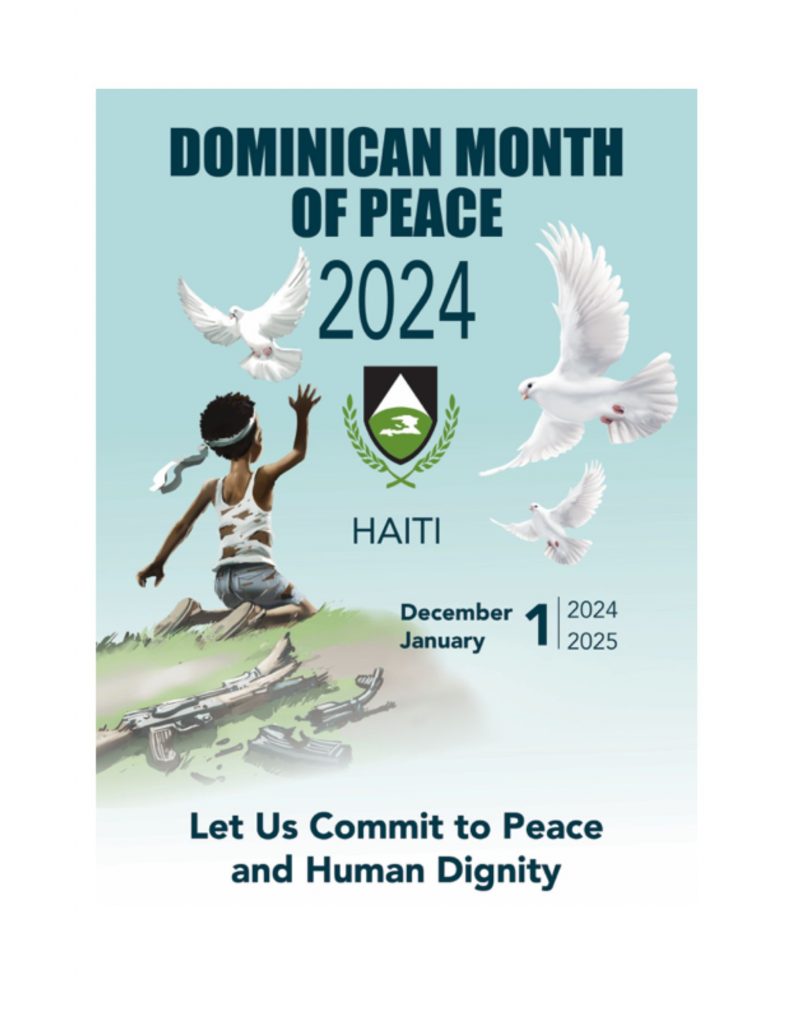Explore the 2024 Month of Peace Materials on the Domlife Website!
🌟 Dive into this year’s Month of Peace with resources now available for Weeks 1-4 on the DSC website!
📹 Featured Video: Haiti Welcomes Much-Needed Dominican Peace Month ( Mes Dominicano de la Paz/Mois de la Paix)
📝 Insightful Article: Internally Displaced Persons in the Metropolitan Area of Port-au-Prince, Haiti
– Report by Brother Ignace BERTHOT, OP, Justice and Peace Promoter of the Province of Toulouse
Stay informed, inspired, and engaged as we work together for justice and peace.
👉 View the materials now: CLICK HERE TO ACCESS MATERIALS
 USA
USA



